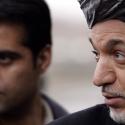 |
 |
The Formation of Electoral Alliances in Afghan Politics in the 2014 Presidential Season

Key Takeaway: Candidates for Afghanistan’s 2014 elections will declare their intent to run for office by October 6, 2013. The most prominent candidates to emerge are Zalmai Rassoul and Abdullah Abdullah. They represent the two main electoral factions will decide the 2014 election: the Karzai-Establishment and an anti-Karzai opposition. Although it appears that a large number of electoral alliances have formed and are backing a wider pool of high profile candidates, these two factions will predominate. The Karzai-Fahim electoral alliance that has characterized Afghan politics since 2009 seems to have broken, and Fahim has joined Abdullah Abdullah. Northern powerbrokers are reorienting, but some influential Tajiks such as Mohammad Atta Noor are likely to join the pro-Karzai establishment candidate. Rassoul is either a Karzai puppet or a placeholder for another candidate. He will need the Karzai family for electoral support.
From now until October 6, candidates for the 2014 Afghan presidential election can officially declare their intent to run for office. The Afghan political rumor mill has proffered a number of viable contenders, with early speculation centering on President Karzai’s older brother Qayum Karzai, controversial Islamist figure Abdurrab Rasul Sayyaf, popular former Ambassador to Pakistan and recently appointed Interior Minister Omar Daudzai, and former National Security Advisor and current Foreign Minister Zalmai Rassoul. Rassoul is reportedly the latest candidate to be favored by President Karzai, but that rumor is almost a month old. All discussions of potential contenders also include 2009 runner-up, Dr. Abdullah Abdullah, presently the leader of the opposition National Coalition of Afghanistan (NCA). But in Afghan politics, coalitions, not just individuals, are the keys to electoral success.
A number of new electoral alliances have formed and have stated their intent to put forward candidates for the presidential contest. Most of these alliances seem to have coalesced during and after Ramadan, which ended on August 7 of this year. Tracking the development of these electoral alliances provides an early indication of how the 2014 presidential contest may unfold. The presence or absence of certain influential Afghan political players within these alliances will partially determine election outcomes. Two major factions are emerging, one dedicated to the Karzai-establishment, and the opposition organized to defeat it. The opposing forces reflect significant trends that cut across ethnic lines and demonstrate that the players are pursuing a real strategy to form coalitions with electoral and power political strength.